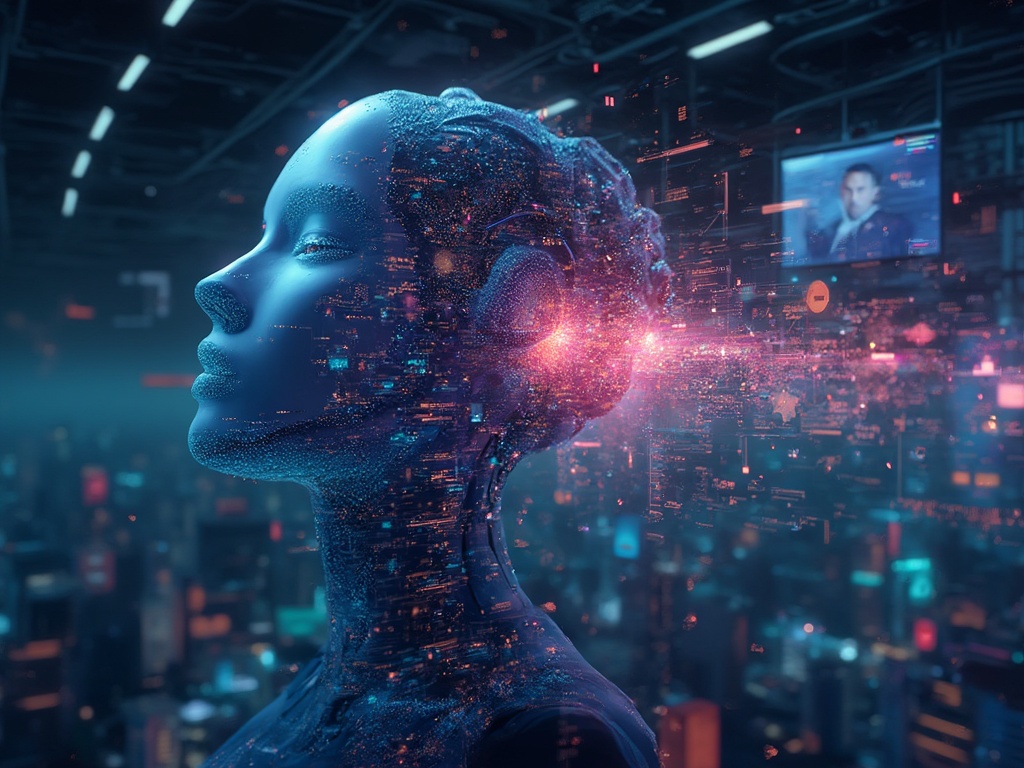
In the world of technology, Artificial Intelligence (AI) emerges as a beacon of potential, especially in the User Experience (UX) domain. Professionals and enthusiasts are constantly exposed to claims about AI-driven solutions set to transform UX design. However, amidst the flood of buzzwords and futuristic forecasts, it’s essential to sift through the noise and understand the genuine impact of AI on UX.
At its core, UX design focuses on crafting products that aren’t just functional but also engaging and intuitive. The integration of AI into UX introduces exciting possibilities, from unparalleled personalization to predictive interfaces that anticipate user needs. Yet, the adoption of AI in UX design isn’t a one-stop solution for instant improvement. It demands a sophisticated grasp of the technology and the users it’s intended to benefit.
AI’s most celebrated advantage in UX lies in its capacity to process and analyze vast amounts of data. This isn’t merely about handling large datasets; it’s about intelligently utilizing data. AI enables UX designers to unlock insights into user behavior that were previously inaccessible, fostering more informed design decisions and tailored user experiences. However, it’s critical not to overestimate AI’s potential to supplant the nuanced comprehension derived from direct human research and empathy. AI should be viewed as a potent addition to the UX toolkit, enhancing rather than replacing human insight.
The potential downsides of AI in UX—indeed, there are downsides—include the risk of oversimplifying complex human experiences. Algorithms may predict user actions accurately but lack the capacity to understand the emotional motivations behind them. Overreliance on AI can lead to experiences that feel impersonal and mechanical, detracting from the essence of quality UX.
Furthermore, the ethical implications of AI-driven UX are significant. Entrusting more decisions to algorithms raises concerns about privacy, consent, and bias. AI systems reflect the biases present in their training data, and without meticulous oversight, they can reinforce harmful stereotypes and inequalities. It’s the responsibility of UX professionals to use AI in ways that honor user rights and promote inclusivity.
Despite these hurdles, the potential for AI to enrich UX is undeniable. From conversational interfaces that mimic human interaction to adaptive systems that evolve with user needs, AI can craft experiences previously confined to the realm of science fiction. The challenge lies in achieving a balance where AI complements and amplifies human judgment.
The excitement surrounding AI in UX often overlooks the practical challenges of implementing such technologies. Effective integration of AI into UX demands a multidisciplinary approach, blending expertise from computer science, psychology, design, and beyond. It requires a culture of experimentation and continuous learning, given the nascent state of AI in UX.
A notable area where AI is making significant advances in UX is accessibility. Utilizing natural language processing and machine learning, AI can remove barriers for users with disabilities, offering interfaces that are more adaptive and responsive. This exemplifies AI’s capability to make technology more accessible and human-centric.
Looking ahead, the future of AI in UX is limited only by our creativity and our commitment to managing the technology responsibly. The next wave of UX professionals must be as knowledgeable about ethical considerations and AI limitations as they are about design principles and user research.
Currently, we’re at the brink of a potential golden era or dystopian future for UX, and it’s evident that the direction we take is not going to be determined by AI itself, but by how we choose to use it. The enthusiasm for AI-driven UX is justified but comes with a significant responsibility. We must use this powerful tool wisely, aiming to enhance rather than diminish the human experience.
Navigating the hype around AI-driven UX requires a crucial skill: the ability to discern not only what we can achieve with AI but what we should aim for. Ultimately, technology is a tool, and its true value lies in how we utilize it to better the human experience.


